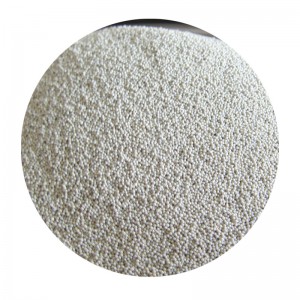The Importance of Sand Cast Industries in Modern Manufacturing
Sand casting, a traditional and widely used method of metal casting, is foundational in modern manufacturing. This versatile process allows for the production of complex shapes in various metals, making it indispensable in industries ranging from automotive to aerospace, and even artistic endeavors. In this article, we will explore the intricacies of sand casting, its applications, advantages, and future prospects.
Understanding Sand Casting
Sand casting involves creating a mold from a mixture of sand, clay, and water. The process starts with a pattern, usually made from metal or plastic, which is pressed into the sand to create a cavity in the mold. Once the mold is prepared, molten metal is poured into the cavity, where it cools and solidifies, taking on the shape of the pattern. After cooling, the sand mold is broken apart to reveal the final cast product.
This method is favored due to its ability to produce large and intricate components quickly and cost-effectively. Sand casting can be utilized for a wide variety of metals, including aluminum, iron, and copper alloys, making it highly adaptable to different manufacturing needs.
Applications in Various Industries
1. Automotive Industry Sand casting is crucial in the automotive sector, where it is used to create engine blocks, cylinders, and other critical components. The ability to produce large quantities of parts while maintaining dimensional accuracy makes sand casting a preferred choice for automobile manufacturers striving for efficiency and quality.
2. Aerospace Sector In aerospace, the production of lightweight yet strong components is crucial. Sand casting allows manufacturers to create complex shapes needed for aircraft engines and other structural components, contributing to improved fuel efficiency and safety.
3. Energy and Casting Products The energy sector also relies on sand casting for manufacturing parts such as pump casings and turbine components. These parts need to withstand extreme conditions, and sand casting provides the strength and durability required.
4. Art and Sculpture Beyond industrial uses, sand casting plays a significant role in art. Artists and sculptors use this method to create intricate metal sculptures and artworks, merging creativity with traditional craftsmanship.
Advantages of Sand Casting
sand cast industries

The sand casting process boasts several advantages that cement its relevance in modern manufacturing
- Low Cost Sand is abundant and inexpensive, making it a cost-effective material for making molds. This affordability translates to lower production costs for manufacturers, particularly in mass production.
- Versatility Sand casting can accommodate a wide range of alloys and materials, allowing for diversified applications across different industries. This versatility is essential for meeting specific engineering requirements.
- Complex Geometries Sand casting is ideal for producing complex geometries that may be difficult or impossible to achieve with other manufacturing methods. This capability enables engineers to design innovative products without extensive redesigns.
- Ease of Modification Patterns can be easily modified or replaced, allowing manufacturers to adapt quickly to changing design requirements or to produce customized products without significant retooling costs.
Future of Sand Casting
As industries continue to innovate, the sand casting process is evolving. Advances in technology, such as 3D printing, are beginning to influence mold making, allowing for more precise patterns and improved production timelines. Moreover, the integration of simulation software in the design phase aids in optimizing the casting process, reducing defects, and improving the overall quality of the end products.
Sustainability is also becoming a critical focus in sand casting. Efforts are being made to recycle sand and reduce waste, ensuring that the process aligns with environmental standards and appeals to eco-conscious manufacturers and consumers.
Conclusion
In conclusion, the sand casting industry remains a pillar of modern manufacturing. Its ability to produce high-quality, complex components across a multitude of sectors underscores its importance. As technology progresses and sustainability becomes a priority, sand casting will continue to adapt and thrive, securing its place in the future of manufacturing. Whether in industrial applications or artistic endeavors, the impact of sand casting is significant and lasting, reflecting the blend of tradition and innovation that defines this dynamic field.
Post time:Abe . 29, 2024 11:01
Next:Innovative Techniques in 3D Sand Casting for Modern Manufacturing Applications
